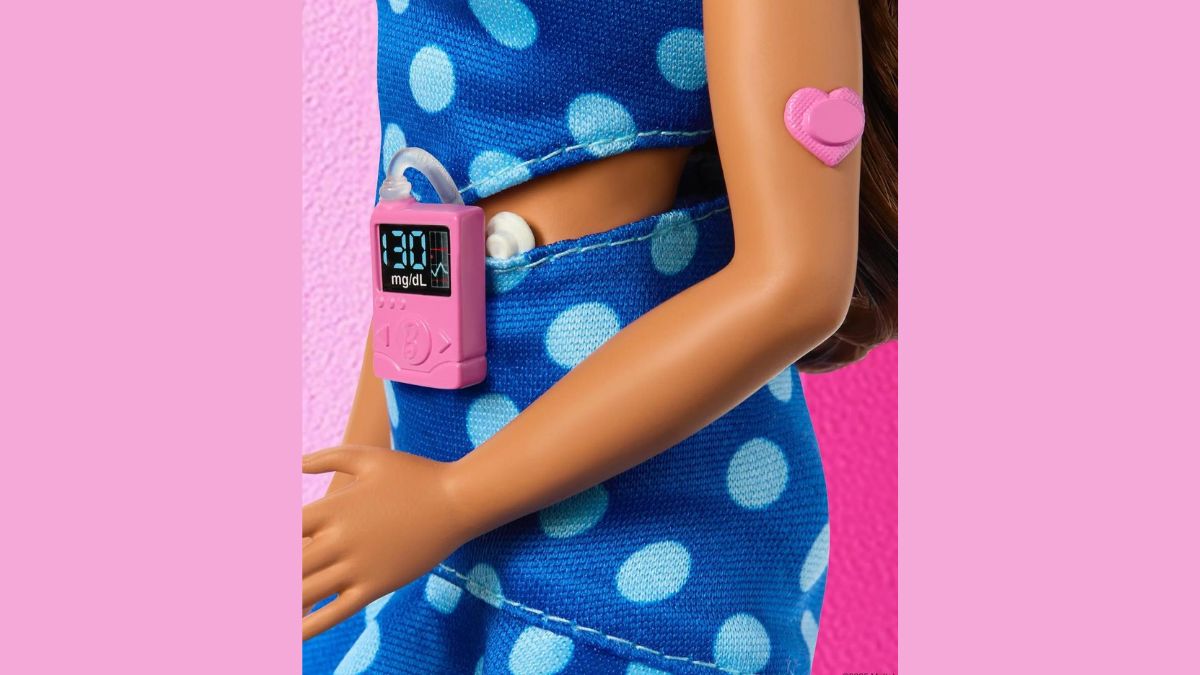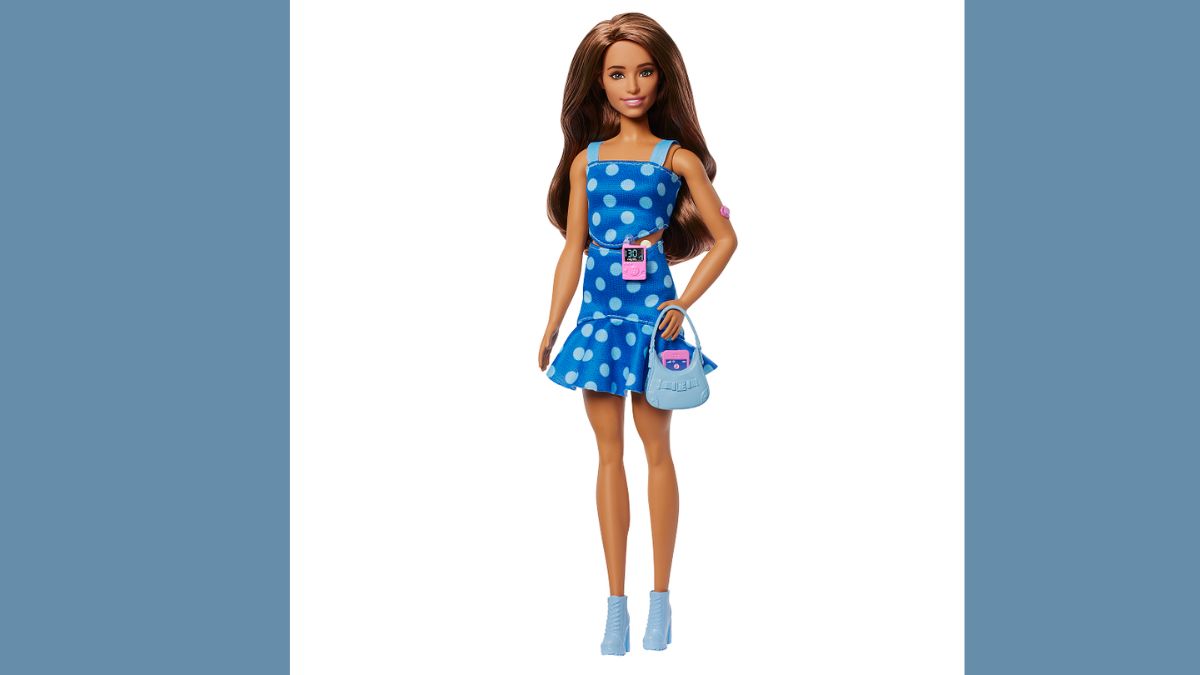New York: What if your doll looked just like you—not just in skin tone or hair texture, but down to the medical devices that help you thrive every day? On July 8, 2025, Mattel made that vision a reality with the release of the very first Barbie doll with type 1 diabetes (T1D). This landmark doll comes complete with a continuous glucose monitor (CGM), an insulin pump, and a story that could change how millions of children see themselves.
This isn’t just a plastic toy—it’s an empathy-building moment. For years, kids with chronic conditions like T1D have rarely seen themselves reflected in mainstream media or toys. Now, with the collaboration of Breakthrough T1D (formerly JDRF), Mattel has taken a giant step toward normalizing and celebrating these differences. The Barbie doll with diabetes is more than a fashion statement; she’s an educational tool and a source of empowerment.
From her blue polka-dot dress (a nod to diabetes awareness) to the heart-shaped CGM tape in Barbie pink, every detail is thoughtful and rooted in real-world experience. But beyond the accessories, this Barbie sends a powerful message: Having type 1 diabetes doesn’t limit your dreams. If anything, it gives you new ways to shine.
Also Read: Why Did Red Bull Fire Christian Horner? What We Know So Far
What Makes the Type 1 Diabetes Barbie So Special?
Mattel’s new Barbie isn’t just inclusive in spirit—she’s medically accurate. Thanks to their partnership with Breakthrough T1D, the doll features:
- A Continuous Glucose Monitor (CGM): Worn on her arm and held in place with heart-shaped Barbie-pink tape.
- An Insulin Pump: Clipped to her waist, symbolizing the real-life device used for insulin therapy.
- A Smartphone with a CGM App: Showcasing actual glucose readings that were tracked during the design process.
- A Pastel Blue Purse: For carrying essential diabetes supplies or snacks.
Even her blue polka-dot outfit and circle print are symbolic, referencing international diabetes awareness icons. No detail was too small—including her blood sugar reading on the CGM app display (130 mg/dL, perfectly normal).

How This Doll Could Help Kids with T1D
For children living with type 1 diabetes, this doll is more than play—it’s validation. When a child sees a doll managing the same condition they do, it can reduce feelings of isolation, encourage open conversations, and even make diabetes education easier. This Barbie can be a mirror for kids with diabetes, and a window for their peers.
As Dr. Aaron J. Kowalski, CEO of Breakthrough T1D, noted, the representation is deeply personal. He and his brother were both diagnosed with T1D in childhood. Now, with this launch, he hopes to help families normalize the condition, remove stigma, and show kids they’re not alone.
Where to Buy the Barbie Doll with Type 1 Diabetes
The new Barbie doll with type 1 diabetes is available now online and through select retailers, making it easier than ever for families to bring home this powerful symbol of representation.
Here’s where you can buy her:
Walmart – Barbie Fashionistas Doll with Blue Polka Dot Dress – Listed under “FSHNSTA BLUE DOT,” this version includes the full Type 1 Diabetes accessories and outfit.
Amazon – Barbie Fashionistas Doll #216 – Features the CGM on her arm and the insulin pump on her waist, along with Barbie’s signature phone and purse.
Due to high demand, stock may fluctuate. If you’re gifting for a child living with diabetes—or just want to support inclusive play—don’t wait too long to check out!
Why Inclusive Dolls Like This Matter
This release builds on Barbie’s broader goal of increasing representation. The Fashionistas line now features more than 175 looks with diverse skin tones, body types, and abilities. Studies from Cardiff University suggest that doll play can improve empathy and social learning in children—and diversity makes those benefits stronger.
When kids play with dolls that reflect real challenges—like using a wheelchair, managing insulin levels, or using a white cane—they begin to understand that all bodies and experiences are valid. That kind of play can lead to lifelong compassion and awareness.
As one designer, Emily Mazreku, shared, her daughter’s reaction to the new doll said it all: “She looked at me and said, ‘She looks like Mommy.’ That was so special.”







